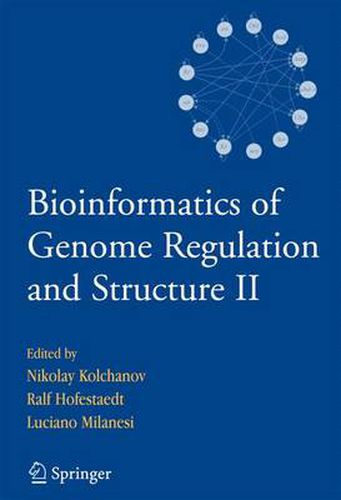Readings Newsletter
Become a Readings Member to make your shopping experience even easier.
Sign in or sign up for free!
You’re not far away from qualifying for FREE standard shipping within Australia
You’ve qualified for FREE standard shipping within Australia
The cart is loading…






This title is printed to order. This book may have been self-published. If so, we cannot guarantee the quality of the content. In the main most books will have gone through the editing process however some may not. We therefore suggest that you be aware of this before ordering this book. If in doubt check either the author or publisher’s details as we are unable to accept any returns unless they are faulty. Please contact us if you have any questions.
The last 15 years in development of biology were marked with accumulation of unprecedentedly huge arrays of experimental data. The information was amassed with exclusively high rates due to the advent of highly efficient experimental technologies that provided for high throughput genomic sequencing; of functional genomics technologies allowing investigation of expression dynamics of large groups of genes using expression DNA chips; of proteomics methods giving the possibility to analyze protein compositions of cells, tissues, and organs, assess the dynamics of the cell proteome, and reconstruct the networks of protein-protein interactions; and of metabolomics, in particular, high resolution mass spectrometry study of cell metabolites, and distribution of metabolic fluxes in the cells with a concurrent investigation of the dynamics of thousands metabolites in an individual cell. Analysis, comprehension, and use of the tremendous volumes of experimental data reflecting the intricate processes underlying the functioning of molecular genetic systems are unfeasible in principle without the systems approach and involvement of the state-of-the-art information and computer technologies and efficient mathematical methods for data analysis and simulation of biological systems and processes. The need in solving these problems initiated the birth of a new science- postgenomic bioinformatics or systems biology in silico.
$9.00 standard shipping within Australia
FREE standard shipping within Australia for orders over $100.00
Express & International shipping calculated at checkout
This title is printed to order. This book may have been self-published. If so, we cannot guarantee the quality of the content. In the main most books will have gone through the editing process however some may not. We therefore suggest that you be aware of this before ordering this book. If in doubt check either the author or publisher’s details as we are unable to accept any returns unless they are faulty. Please contact us if you have any questions.
The last 15 years in development of biology were marked with accumulation of unprecedentedly huge arrays of experimental data. The information was amassed with exclusively high rates due to the advent of highly efficient experimental technologies that provided for high throughput genomic sequencing; of functional genomics technologies allowing investigation of expression dynamics of large groups of genes using expression DNA chips; of proteomics methods giving the possibility to analyze protein compositions of cells, tissues, and organs, assess the dynamics of the cell proteome, and reconstruct the networks of protein-protein interactions; and of metabolomics, in particular, high resolution mass spectrometry study of cell metabolites, and distribution of metabolic fluxes in the cells with a concurrent investigation of the dynamics of thousands metabolites in an individual cell. Analysis, comprehension, and use of the tremendous volumes of experimental data reflecting the intricate processes underlying the functioning of molecular genetic systems are unfeasible in principle without the systems approach and involvement of the state-of-the-art information and computer technologies and efficient mathematical methods for data analysis and simulation of biological systems and processes. The need in solving these problems initiated the birth of a new science- postgenomic bioinformatics or systems biology in silico.